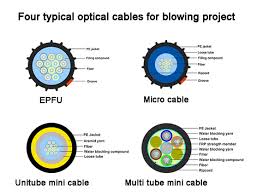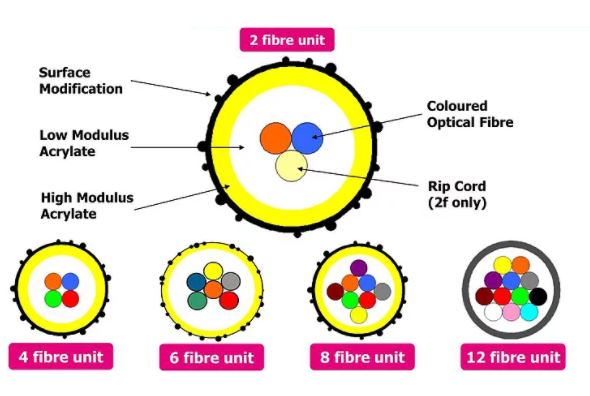Air Blown Micro Fiber Optical Cable
What Is Air Blown Micro Fiber Optical Cable?
Air Blown Micro Fiber Optical Cable Blown Optical Fiber technology provides flexibility in network design, while anticipating and facilitating future changes as the network evolves . It delivers the best fiber solution for backbone, specialty, Fiber-To-The-Desk (FTTD) and Fiber-To-The-Home (FTTH) applications
 Air Blowing Micro fiber Optic Cable system for underground duct networks. The Air Blowing Micro fiber Optic Cable product line is a complete solution with designs suitable for many applications and needs from backbone networks to FTTx. Whether the need is for high fiber density or small cable diameter, the Micro fIBER range has the solution. Designs are always based on minimal cable and duct diameters for cost effective installation and materials.
Air Blowing Micro fiber Optic Cable system for underground duct networks. The Air Blowing Micro fiber Optic Cable product line is a complete solution with designs suitable for many applications and needs from backbone networks to FTTx. Whether the need is for high fiber density or small cable diameter, the Micro fIBER range has the solution. Designs are always based on minimal cable and duct diameters for cost effective installation and materials.
The cable can be used as the drop cable of distribution segments in FTTH networks and can be laid by air blowing to connect the branch point with the access point for subscribers. The cable is also applicable in backbone networks , metropolitan area networks and access networks
This technology is a new way to make significant improvements in traditional fiber optic systems, facilitating the rapid adoption of fiber optic networks and providing users with a flexible, secure, cost-effective cabling system.
The blowing system consists of micro-tubes (single micro-tubes and micro-tubes), micro-cables, fittings and air blowing equipment.
Fibre optic cable is an advanced type of network cable, offering significantly improved performance in terms of bandwidth and data carrying than traditional metal conductor versions.
Fibre optic cables are commonly found today in higher-end internet, phone and TV applications. They’re also used in many other areas of the home and workplace use, including in decor applications – fibre optic Christmas trees, for example, are not at all uncommon now.
The ability of optical fibre cable to save a great deal of space over bulkier types of traditional cabling has also made them a popular choice for numerous lighting and safety features in modern cars. They’re widely used in many other demanding professional fields too, including in a great many medical applications, for detailed mechanical inspections, and as sensors for monitoring and controlling the flow of various sorts of electrical currents, sounds and chemicals.



